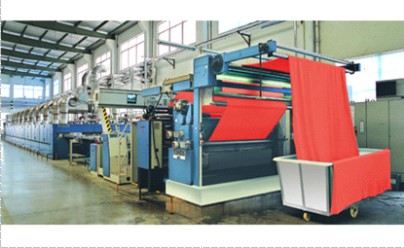Finishing Methods for Textiles – Finishing refers to the processes that convert the woven or knitted cloth into a usable material and more specifically to any process performed after dyeing the yarn or fabric to improve the look, performance, or “hand” (feel) of the finished textile or clothing. Every fabric before going for marketing , needs some finishes that is applied in order to make it more efficient and smooth. Textile finishing provides a method whereby deficiencies in the textile can be corrected or specific properties can be introduced.
There are basically two finishes i.e., Physical finishes and chemical finishes. Physical finishing is usually carried out on the yarn or formed textile substrate, whereas chemical finishes can be added to the spinning bath prior to fiber formation for man-made fibers or applied to individual fibers,yarns, or completed textile structures. Therefore, finishes are done before the formation of fabrics such as bleaching and dyeing applied to the yarns and some finishes are given to the fabrics after the process of weaving or printing.
Physical finishing methods for textiles include optical finishing, brushing and napping, softening, shearing, and compacting of the textile structure. Chemical finishes are chemical re- agents or polymeric materials applied to textile structures by a number of methods. Some of the major chemical finishes which are affecting comfort and service of the fabrics are Optical finishes, Lamineting finishes, softeners and abrasion resistant fibers.
Textile finishes are important for the fabrics as its improves the appearance of fabrics and enhance its looks, improves its touch and also provides variety to its designing through dyeing and printing. Finishes also improves the draping ability of light weight fabrics.
Textile finishes are classified on different basis such as on functional basis, performance basis and chemical and mechanical basis. In functional finishes, there are two types of finishes i.e., basic and functional finishes. On the basis of performances, Textile finishes are cleassified into Temporary, Semi-Durable, Permanent and Durable finishes and on the basis of chemical and mechanical finishes, finishes can be classified into chemical and mechanical finishes.
All the finishes are given according to the requirement of the fabrics but basic finishes are the finishes which are applied to almost all the fabrics, with an aim to improve their appearance, feel and body .Steam- ironing and calendaring are some of the basic finishes.
Therefore a series of finishes are given to the fabrics and even yarns in the mills to finish textile goods. But it is also not must that every textile goods are given finishes because sometime unfinished textile are also useful for further textile production and these are known as gray goods or unfinished textile.
